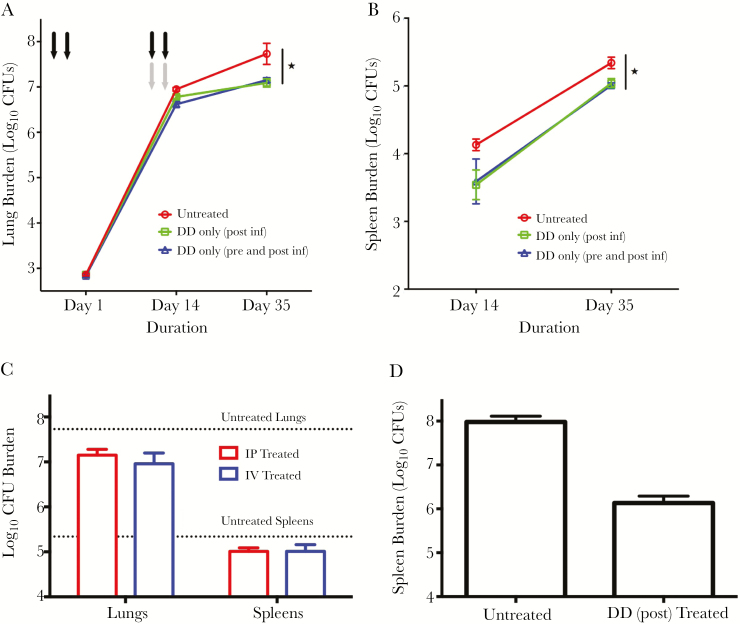Figure 1.
Denileukin diftitox (DD) treatment decreases tuberculosis disease progression and lung-to-spleen dissemination. A and B, Groups of C57BL/6 mice (5 mice per time point) were infected with 2.9 log10 units of Mycobacterium tuberculosis H37Rv by the aerosol route on day 0. Pre- and postinfection–treated mice (black arrows) received DD (35 μg/kg intraperitoneally [IP]) on days –3 and –1 preinfection (first cycle) and on days 11 and 13 postinfection (second cycle), while a separate postinfection-only group (gray arrows) received only 1 cycle of treatment on days 11 and 13. Mouse lungs (A) and spleens (B) were homogenized, diluted, and plated for colony-forming unit (CFU) counts. C, Groups of mice were treated with DD either by the IP or intravenous (IV) routes with 2 drug cycles (1 pre- and 1 postinfection cycle as in A), and lungs and spleens were plated for CFU counts on day 35. The dotted lines represent the day 35 CFU counts for untreated animals. D, Mice were infected with 3.84 log10 units of M. tuberculosis H37Rv by the aerosol route, and were given DD (35 μg/kg IP) for 1 cycle starting on day 11 postinfection. The mice were killed at day 28, and spleens were homogenized, diluted, and plated for CFU counts. *P < .05.

